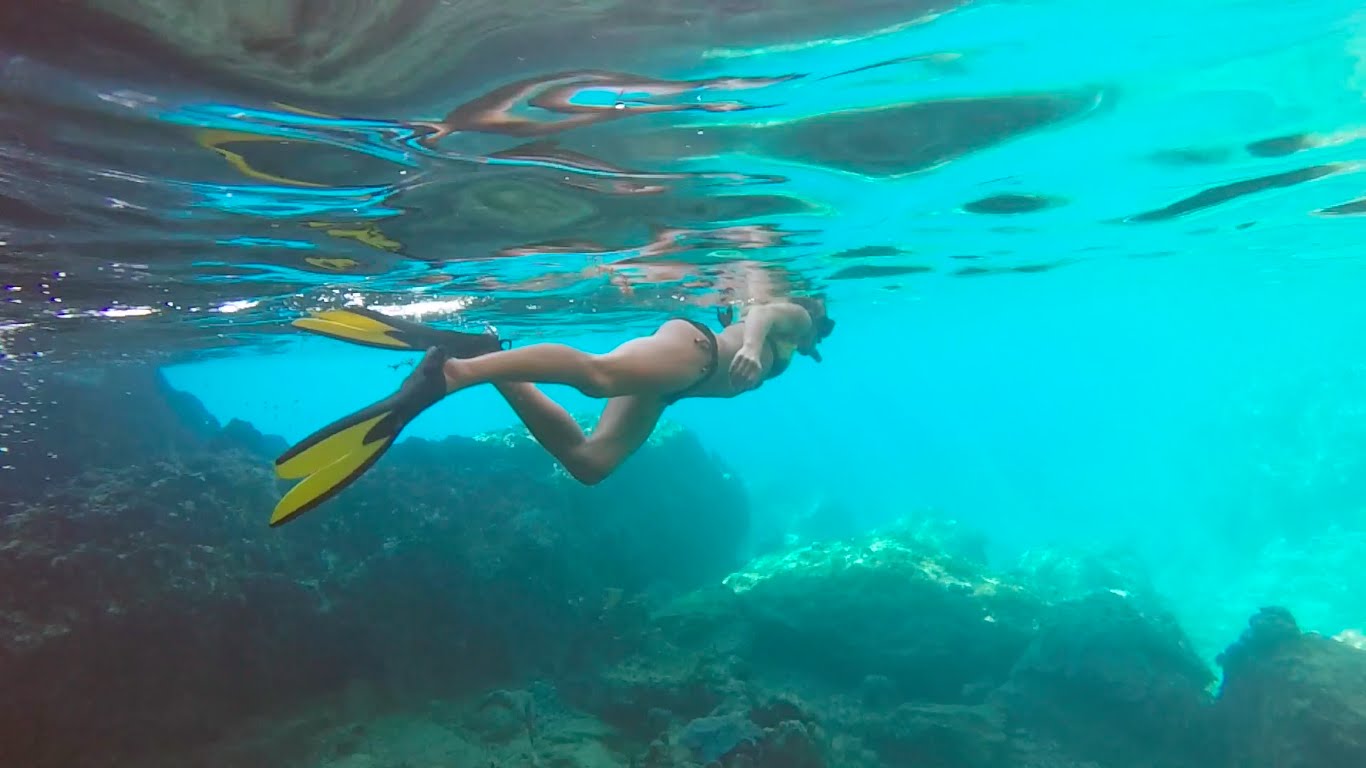All crewed charter yachts in every destination provide top-quality snorkeling gear for you to explore the mesmerizing underwater world. Let’s explore our favorites in the British Virgin Islands!
The Indians
The Indians, a must-see snorkeling spot is near Pelican Island close to Norman Island. Four rocks emerge from the sea and the name comes from the myth that the rocks resemble an Indian’s headdress from far away.
The Indians offer snorkelers a look into an underwater labyrinth of coral gardens and bright-colored reef fish. You can swim around all the rocks and pass through some of them to the other side. There is a small cave and also a shallow swim-through tunnel. The light is good for underwater photography in the morning. You can expect to see a wide variety of fish, creatures, and sponges making it a truly spectacular sight.
Depth: 5 to 55 feet.


The Caves
Before the entrance to the Bight of Norman Island is a rocky point with small caves where snorkelers can swim in and turn around. The biggest cave will allow you to look up and see the great rock formations with a good view of the outside. Please do not touch any of the sea urchins in the shallow area.
You can see a wide variety of colorful sponges in the shady parts and small reef fish nearby. When you snorkel along the wall, you may see larger fish in schools and finally arrive at a small entrance that will show you an amazing high ceiling and an exit to the rocky beach. Here you will see smaller creatures and more schools of smaller fish.
Depth: 10 – 35 feet.


The Wreck of the Rhone
The wreck is at Black Point of Salt Island. The snorkeling is nice along the coast where the wreck lays deeper and along the way, there are underwater boulders where large eye puffer fish and lobsters hide in overhangs.
When you reach the stern of the wreck, you will see the propeller and there is a large pole only 25 ft underwater where you can free-dive to inspect small crabs living there. The shaft and gearbox can be seen running into a depth of 70ft where other pieces can be seen on a day with clear water and little current. This is also one of our favorite SCUBA diving sites.
Depth: 15 – 70 feet


The Baths
When you moor near the beach at the Baths in Virgin Gorda, you can swim ashore to explore with your snorkel gear. Along the way to Devil’s Bay, the underwater area features a series of giant granite boulders that create a maze of caves, tunnels, and pools where you can peek in the grottos for nurse sharks. You will see many schools of colorful parrot fish, blue tangs and the cups corals, and vibrant sponges that are home to interesting marine species – glassy sweepers.
The Baths is one of the most popular tourist destinations in the British Virgin Islands. Snorkelers can explore the underwater caves and swim through the crystal-clear waters for an unforgettable experience.
Depth: 15 – 30 feet


Cistern point
You start at Manchioneel Bay to Cistern Point – a large rock to the right of Cooper Island. You can swim there and look for turtles or your crew can take you there with the tender to the Park Island buoys and snorkel around the rock.
The reef is shallow, but you can venture around the deep end with larger boulders underwater with larger ocean fish like barracuda and nurse sharks. Look closer to the overhang of the rock to see spiny lobsters hiding.
Depth: 15 – 40ft


The Dog Islands
The Dog Islands lay on your way between Scrub Island and Virgin Gorda. The snorkeling is excellent and there are multiple snorkeling spots, but we will focus on Great Dog.
There is protection from the north swell at The Chimney. There is a bay where you can follow the reef in a half moon and return to the yacht. Its rock ledges, overhangs, and cathedral-shaped tunnels and grottoes are home to lobsters, beautiful fan corals, many colorful sponges, and large schools of reef fish.
Depth: 15 – 35ft


Loblolly Beach
When in Anegada, you can make your way to Loblolly Beach and see large reefs with easy snorkeling in the gin-like crystal clear water. The soft sand makes for an easy entry from the beach and then you can snorkel to coral heads. Look for stingrays in the sand and schools of ballyhoo fish near the surface.
Around the reef, you will see more soft coral and sergeant major fish in schools swarming around. The water is warmer in the very shallow sandy areas and you can enjoy a long time exploring the third reef in the world.
Depth: 5 – 15ft




